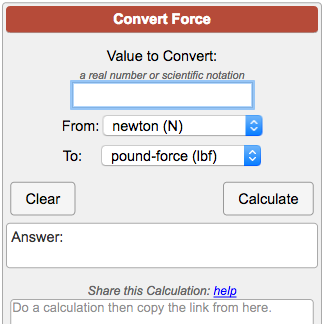The 5-Second Trick For Inches To Centimenter
Inches To Centimenter Fundamentals Explained
Table of ContentsGetting My Inches To Centimenter To WorkInches To Centimenter for BeginnersExcitement About Inches To CentimenterThe 5-Minute Rule for Inches To Centimenter
This makes discovering System Conversion Tool a breeze and will certainly boost your performance substantially while flattening the finding out contour. You can save lots of time by utilizing the global converter as it functions in offline mode too. And it provides you accurate conversion causes mostly all devices offered for dimensions.99% precise answer (inches to centimenter). Since Universal Converter application is readily available totally free on store for all systems, just download the application from store, set up the application on your smartphone and open up the application, select your conversion devices and also after that type in the value and also click 'Convert' for results. This application is easy to use user interface with giving instant as well as precise outcome.
This proves to be a perfect solution for area work and also you are essentially ensured to find the precise conversion device when needed! User pleasant Interface Gives Accurate Outcome Instant Output No requirement for Web Connection Gives converted lead to all Feasible Systems Universal Converter gives an exact and instant outcome to all inputs.

The smart Trick of Inches To Centimenter That Nobody is Discussing
Thanks for your questionnaire (inches to centimenter). Sending conclusion
Here is a helpful and also useful reader-contributed system conversion utility which has been sent for addition to the main Revit SDK samples. One main factor discussed there is the fact that Revit inside uses a fixed collection of internal database systems which can not be altered.
The message mentions the straightforward system converter offered by the Midas, Web link sample, that makes usage of hard-wired self-maintained conversion constants, and also recommends a basic hands-on manual method for determining any type of required conversion factor (inches to centimenter). The system conversion energy presented here demonstrates just how this procedure can be automated to stay clear of the demand for any hard-coded conversion factors at all.
One use this is to transform and display the internal Revit data source systems to whatever units the individual chooses to see in the user interface. It would certainly be good to access this functionality from our outside add-in applications as well, as opposed to maintaining our very own conversion regimens. We currently reviewed one idea for a technique to access the inner Revit performance to style device strings using the As, Worth, String and Set, Value, String techniques on the important source Parameter class.
Some Known Factual Statements About Inches To Centimenter
For efficiency' sake, we likewise discuss an additional location associated to systems that we discussed briefly, the exploration of device kinds as well as style alternatives by Matt as well as Saikat. The appropriately name Unit, Conversion utility offered here demonstrates accessing the internal Revit unit taking care of functionality to implement the inverse direction too, and additionally gives an useful interface for figuring out and examining device dealing with functionality and conversion elements.


If your project devices for Length are readied to inches, as well as you keep right into a criterion using Set, Value, String the string value for 12, Revit will automatically convert 12 inches right into 1 foot and really store the worth of 1 for you right into the parameter. Making Use Of Establish, Worth, String, you don't even have to recognize that Revit has an interior system of procedure, let alone what those units of procedure are. inches to centimenter.
Excitement About Inches To Centimenter
If, for instance, your project units for Size are established to centimetres and also you send out the string worth: 18" (with the tracking double quotes), Revit will certainly translate that as eighteen inches as well as will save the worth 1. 5 (one as well as a half feet) into your specification for you. As another example, having your job units for Size set to meters as well as using Set, Value, String with the worth: 2' 3" (consisting of the single as well as double quotes) will store the value 2.
Revit recognizes how to do all the string parsing find out here for you, and also will certainly throw an exemption if you try to send it something it can not translate. An identical reverse feature called As, Worth, String also exists in the Revit API. This will certainly transform a parameter's published here inner worth back to the string representation for the existing task systems.
5, calling As, Worth, String will certainly return the string 3' 6". Utilizing this understanding, it is feasible to compose methods which can be utilized to assist address the unit conversion issue far more quickly. For instance, we can compose a feature to return the scale factor (multiplier) that is needed for a details set of units of measure.
If we desire to keep 1000 CFM right into Revit, we have to save the value 16. For the mathematically likely, this scale variable corresponds to 1/60, which tells us the internal systems Revit utilizes for air circulation are Cubic-Feet-per-Second. inches to centimenter.